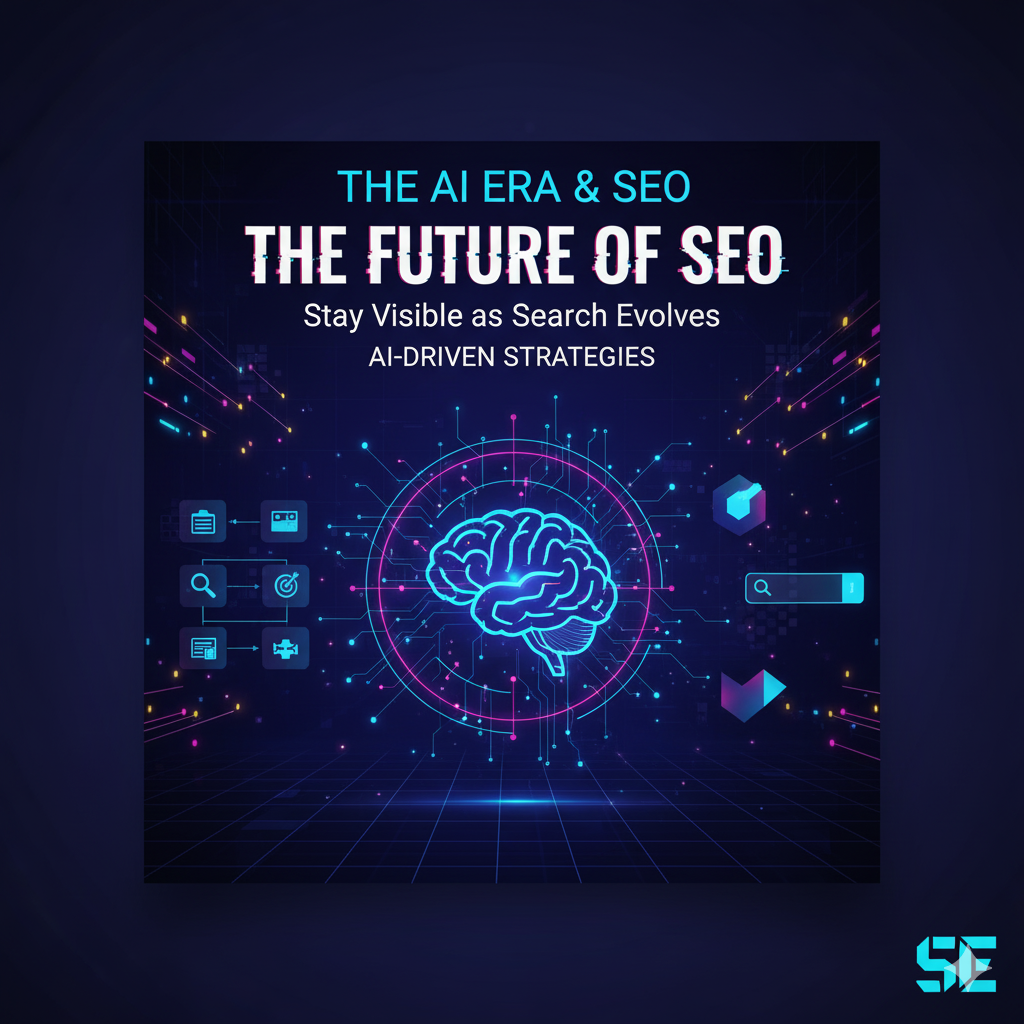
The landscape of Search Engine Optimization (SEO) is undergoing a
profound transformation, driven
primarily by the rapid integration of
Artificial Intelligence (AI) into search
engine algorithms and user interfaces.
For years, the cornerstone of SEO success was the ability to track a website’s position for a specific keyword, often referred to as the “rank.
”
This metric, however, is rapidly losing its relevance as the search environment becomes more complex and personalized [1].
The traditional method of checking a daily rank for a handful of keywords provides an increasingly incomplete and often misleading picture of a website’s true organic performance.
To thrive in this new era, SEO professionals must evolve their tracking methodologies from simple position monitoring to sophisticated, intent-driven intelligence.
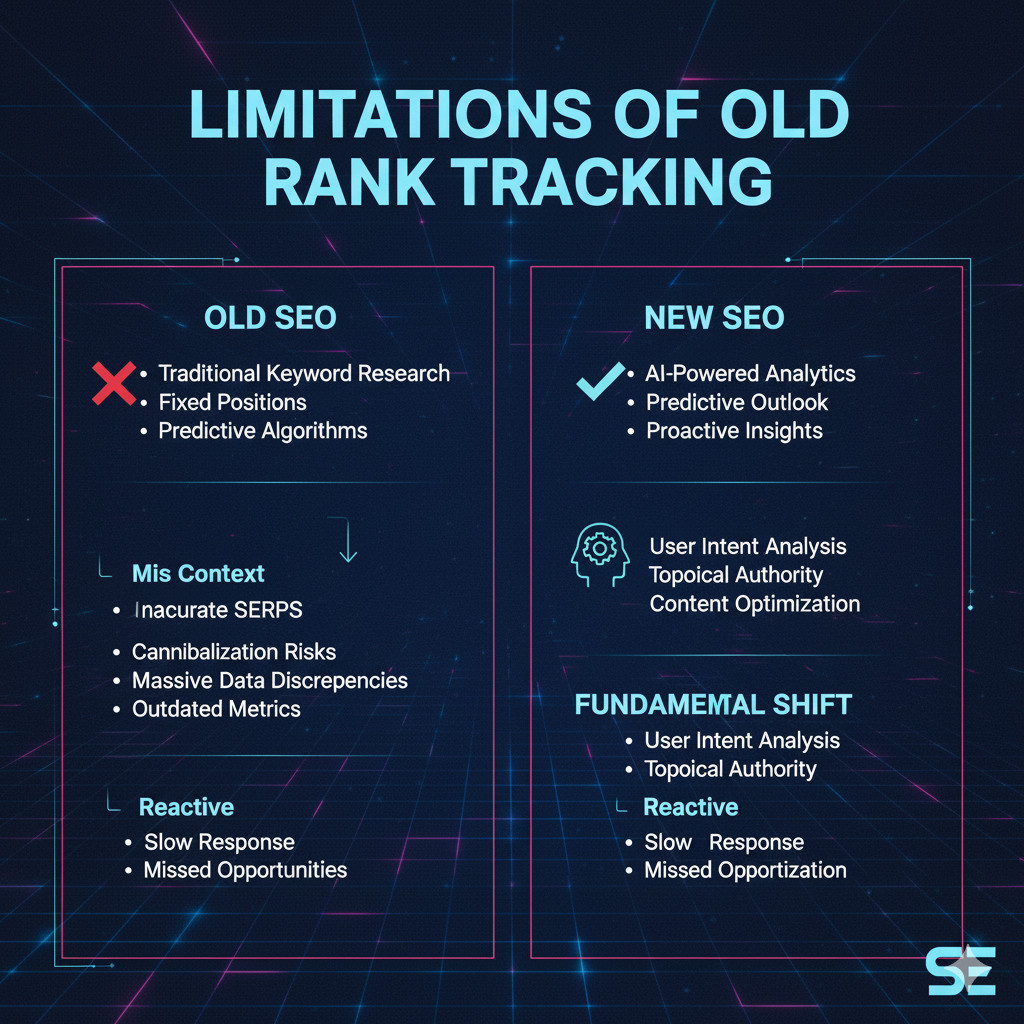
The Old Guard: Limitations of the “Ten Blue Links” Mentality
The concept of the “ten blue links”—a search results page dominated by ten organic listings—is largely a relic of the past.
Today’s Search Engine Results Pages (SERPs) are rich, dynamic, and highly personalized.
The rise of personalized search, where results are tailored based on a user’s location, search history, device, and even browsing behavior, means that a single, universal rank for a keyword no longer exists [2].
What one user sees as the number one result, another user in a different city or with a different search history may see as the third or fourth.
This inherent variability introduces significant noise into traditional rank tracking, making the data less reliable for strategic decision-making.
Furthermore, SERP volatility has increased dramatically.
Search engines are constantly testing and deploying updates, leading to frequent fluctuations in rankings.
Compounding this is the saturation of SERP features, which push organic listings further down the page.
Features like Featured Snippets, Knowledge Panels, People Also Ask (PAA) boxes, image carousels, and video results all compete for the user’s attention and clicks, effectively diminishing the value of a high organic position [3].
A website ranking number one may still receive fewer clicks than a result that captures the Featured Snippet, a phenomenon known as “zero-click searches.
”
The simple metric of “position” fails to account for this complex interplay of elements, making it an inadequate measure of visibility and success.
The AI Overviews (AIO) Revolution and the Death of Impressions
The introduction of AI Overviews (AIOs), or similar generative AI features in search, represents the most significant shift in the SEO landscape.
These features use large language models (LLMs) to synthesize information from multiple sources and present a direct, comprehensive answer at the very top of the SERP.
This changes the fundamental user interaction model: instead of clicking a link to find an answer, the user receives the answer immediately.
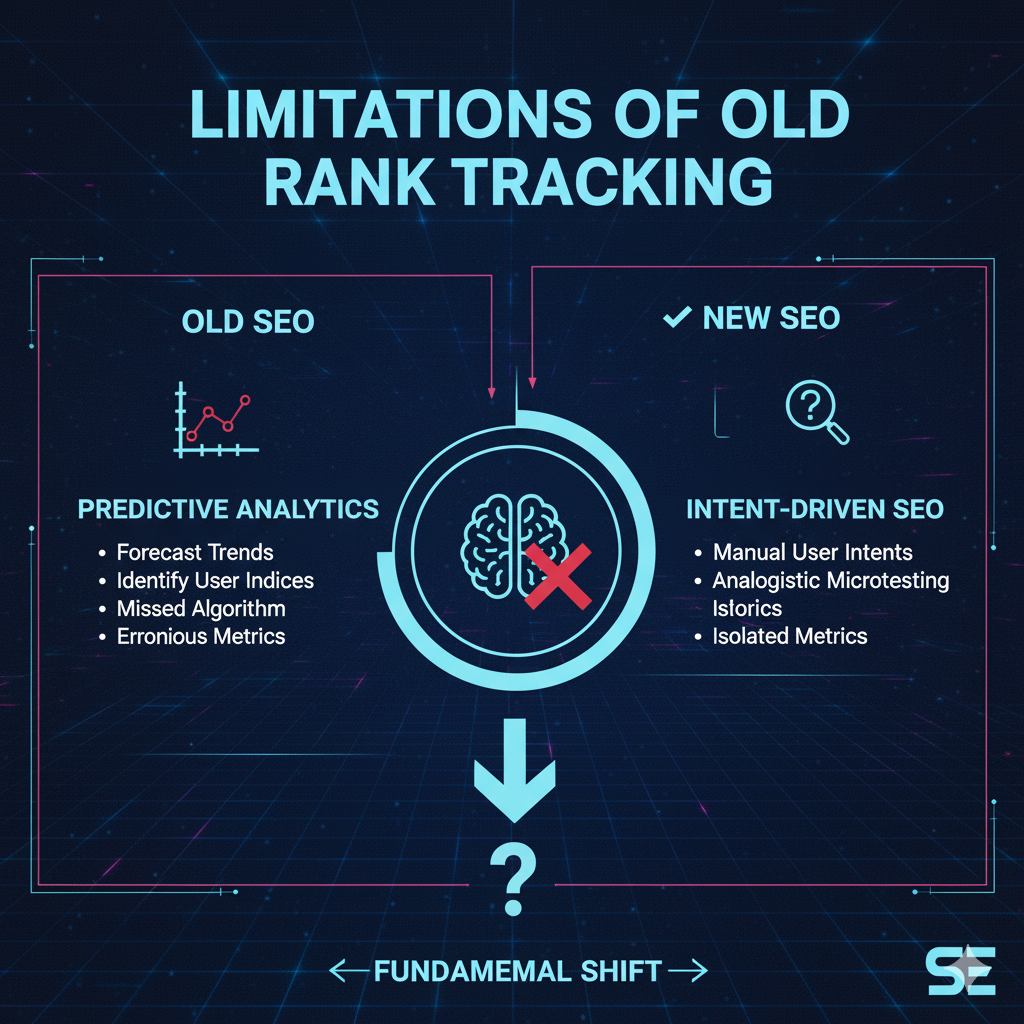
The primary challenge this poses is the impact on Click-Through Rates (CTR).
If the user’s query is fully satisfied by the AIO, they have no need to click on any of the underlying organic results, leading to a potential “death of impressions” for certain informational queries [4].
For SEO tracking, this creates a dilemma.
A website may be cited as a source within an AIO, indicating high authority and relevance, yet it may not receive a corresponding click or impression in the traditional sense.
The traditional rank tracker will show the site’s position, but it won’t capture the crucial metric of “AIO citation visibility.
”
This necessitates a shift in focus from tracking the position of a link to tracking the visibility and authority of the content that feeds the AI model.
Moreover, the search engine’s decision to remove or modify key SEO tracking features, such as the detailed impression data for lower-ranking pages, further underscores the need for new, more sophisticated tracking methods [5].
The industry must move beyond the vanity metric of rank and focus on metrics that truly reflect business value, such as conversions, revenue, and overall topical authority.
AI as the Catalyst: Transforming Keyword Tracking into Intent-Driven Intelligence
The very technology that is disrupting traditional SEO—Artificial Intelligence—is also the solution for navigating the new environment.
AI-powered tools are not just automating old tasks; they are enabling entirely new forms of analysis that were previously impossible, transforming keyword tracking into a system of intent-driven intelligence.
From Keywords to Intent: The Power of Natural Language Processing (NLP)
The most significant evolution is the shift from focusing on keywords to focusing on user intent.
AI, particularly through Natural Language Processing (NLP), allows SEO tools to analyze search queries not as mere strings of words, but as expressions of underlying user needs.
For example, a query like “best running shoes for flat feet” is no longer just a collection of four keywords; NLP identifies the intent as transactional (looking to buy) and informational (seeking recommendations based on a specific physical condition).
AI tools can now cluster thousands of related keywords into comprehensive topics based on this shared intent, revealing content gaps and opportunities that a simple keyword list would miss [6].
This approach allows SEO professionals to build content strategies that satisfy the entire user journey, rather than optimizing for isolated, high-volume terms.
By understanding the why behind the search, content creators can ensure their articles, product pages, and landing pages are perfectly aligned with the user’s stage in the buying funnel.
This semantic understanding is crucial for gaining visibility in AIOs, which prioritize content that comprehensively addresses a topic.
Enhanced Accuracy and Predictive Analytics in Rank Monitoring
AI is injecting a much-needed layer of accuracy and foresight into rank monitoring.
Traditional rank trackers often struggle to account for the personalization and localization factors that make a single rank unreliable.
Modern, AI-driven rank trackers use machine learning models to simulate search behavior across various user segments, locations, and devices.
They can provide a more trustworthy and representative view of a website’s true visibility by aggregating and normalizing data from these personalized SERP variations [7].
Beyond accuracy, AI introduces the capability for predictive analytics.
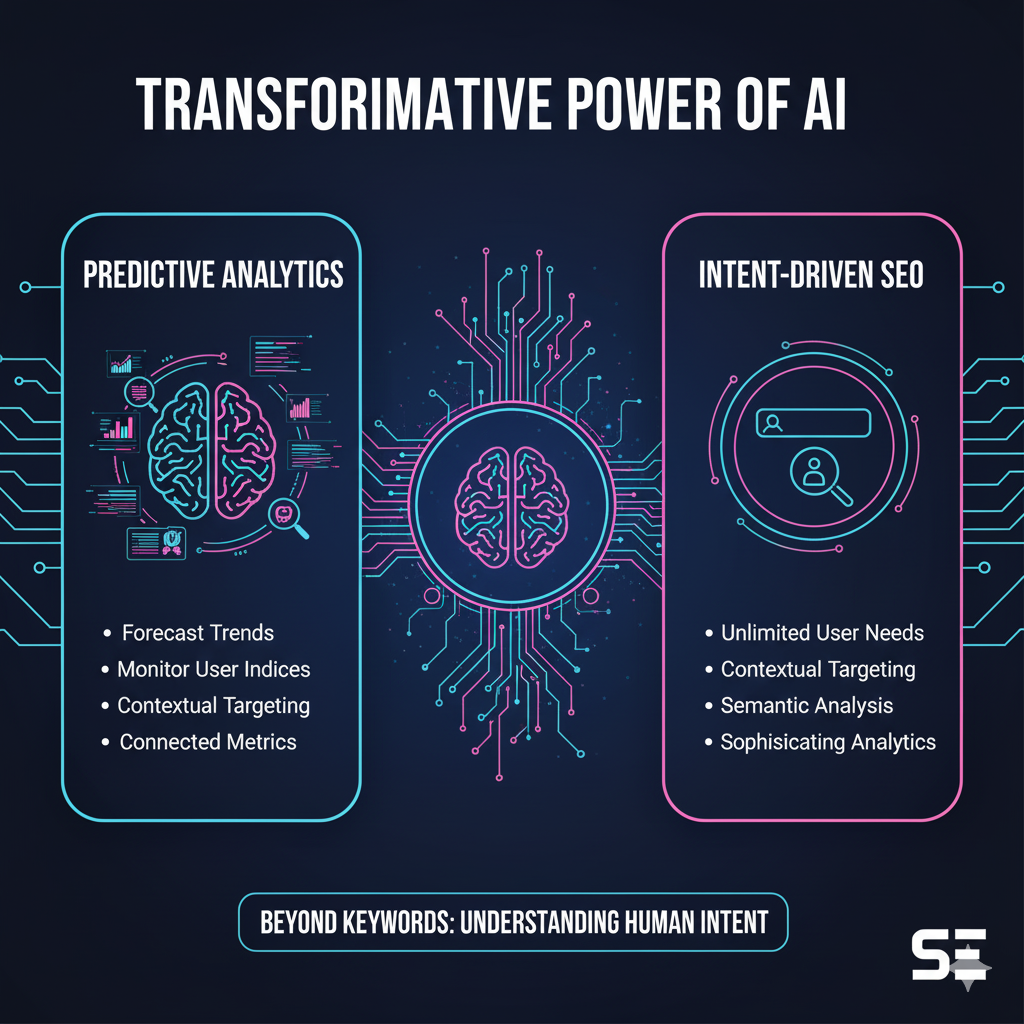
By analyzing historical ranking data, content changes, backlink profiles, and algorithm updates, machine learning models can forecast future keyword performance and traffic trends.
This allows SEO teams to be proactive rather than reactive.
Instead of waiting for a keyword to drop from position 5 to 15, AI can identify “at-risk” keywords—those showing early signs of volatility or decline—and alert the team to optimize the content before a significant drop occurs.
This predictive capability transforms tracking from a historical reporting function into a strategic forecasting tool.
The Role of AI in Competitive Analysis and SERP Feature Tracking
Competitive analysis has always been a time-consuming, manual process.
AI automates this, providing a continuous, high-fidelity view of the competitive landscape.
AI tools can automatically monitor competitor content strategies, identify new keywords they are targeting, and track shifts in their backlink acquisition.
More importantly, AI is essential for tracking the dynamic nature of SERP features.
Since a significant portion of clicks now goes to non-traditional organic results, tracking the presence and impact of features like video carousels, image packs, and PAA boxes is critical.
AI models can systematically analyze SERPs to determine the Share of Voice (SOV)—the percentage of the SERP a brand owns—across all features, providing a far more holistic measure of visibility than a simple rank [8].
| Traditional Metric | AI-Driven Metric | Strategic Value |
|---|---|---|
| Keyword Position | Share of Voice (SOV) | Measures overall brand visibility across all SERP features, not just one link. |
| Keyword Volume | Topic Authority Score | Focuses on comprehensive content coverage and semantic relevance, aligning with AIOs. |
| Historical Rank | Predictive Rank Volatility | Alerts teams to potential rank drops *before* they happen, enabling proactive optimization. |
| Manual Audits | Automated Anomaly Detection | Instantly flags unusual traffic drops or spikes, pinpointing the root cause across multiple data sources. |
The challenge in modern website analytics is not a lack of data, but an overwhelming data overload.
Marketing teams often juggle data from Google Analytics 4 (GA4), Google Search Console, CRM systems, advertising platforms, and various SEO tools.
These data silos make it difficult to form a unified, actionable picture of performance.
AI is the key to smoothing this process, turning a deluge of raw numbers into clear, strategic insights.
Data Overload to Data Insight: AI-Powered Data Aggregation
AI excels at handling massive, disparate datasets.
The first step in smoothing analytics is AI-powered data aggregation.
Machine learning algorithms can automatically clean, normalize, and connect data from all sources into a single, cohesive view.
This eliminates the manual, error-prone process of exporting, merging, and reconciling spreadsheets.
For instance, AI can connect a specific keyword’s ranking change (from a rank tracker) with the corresponding traffic change (from GA4) and the resulting revenue impact (from the CRM), providing a complete performance loop [9].
Furthermore, AI is indispensable for automated anomaly detection and root cause analysis.
Instead of manually sifting through charts to find a dip in traffic, AI models continuously monitor all metrics.
When an unusual event occurs—a sudden drop in mobile traffic, a spike in bounce rate from a specific country—the AI instantly flags the anomaly and, crucially, begins to analyze the connected datasets to suggest the most likely root cause.
This transforms the analyst’s role from a data detective to a strategic problem-solver.
Automated Reporting and Narrative Generation
One of the most time-consuming aspects of analytics is reporting.
AI is revolutionizing this by moving beyond raw numbers to automated reporting and narrative generation.
Instead of a spreadsheet full of metrics, AI can generate a natural language summary of the week’s performance: “Organic traffic increased by 15% this week, primarily driven by a 3-position jump for the ‘best AI tracking tools’ topic cluster.
The drop in mobile conversion rate on Tuesday was traced to a server-side error on the checkout page, which has now been resolved.
”
This capability ensures that reports are not just data dumps but actionable insights tailored to the audience.
Executives receive high-level summaries focused on business outcomes (revenue, customer acquisition cost), while content teams receive granular data on keyword performance and content optimization suggestions.
Customizable dashboards, powered by AI, automatically highlight the most critical metrics based on predefined business goals, ensuring that attention is always focused on the highest-impact areas.
Understanding User Behavior with Machine Learning
The shift to event-based analytics platforms like GA4 has created a wealth of data on user behavior, but interpreting it requires advanced techniques.
Machine learning models are now used to analyze complex user journeys and conversion paths, providing a deeper understanding of how visitors interact with a website.
AI can identify subtle patterns that lead to conversion, such as the specific sequence of pages a high-value customer visits before making a purchase.
This analysis extends to predictive customer lifetime value (CLV).
By analyzing early-stage user behavior, AI can predict which new visitors are most likely to become high-value, long-term customers.
This allows marketing teams to allocate resources more effectively, focusing on nurturing high-potential segments.
Similarly, AI can be used to optimize site structure and internal linking by analyzing user flow data, ensuring that the website architecture naturally guides users toward desired outcomes [10].
The Toolkit of Tomorrow: Essential AI-Powered Tracking Solutions
To implement this new, smoother approach to tracking, SEO professionals need to adopt a new generation of tools that are built from the ground up with AI and machine learning capabilities.
Next-Generation Rank Trackers and Visibility Tools
The modern rank tracker must do more than just report a number.
It must track Share of Voice (SOV) across the entire SERP.
These tools analyze the entire first page of results, calculating the percentage of screen real estate and potential clicks your brand owns, including all SERP features.
Furthermore, with the rise of AIOs, the most advanced tools now integrate AI Overview tracking and citation analysis.
They can identify when your content is being used as a source for an AIO and track the performance of your content in this new, zero-click environment.
The focus is on visibility in the broadest sense, ensuring performance is measured accurately in an AI-first search world.
AI-Driven Content Optimization and Auditing Platforms
The process of content creation and optimization is now heavily reliant on AI.
Platforms are emerging that use sophisticated NLP models to score content for topical authority and intent match.
These tools move beyond simple keyword density checks, analyzing the semantic relationship between your content and the user’s query.
They can generate automated content briefs, suggesting subtopics, questions to answer, and entities to mention to ensure the content is comprehensive and authoritative enough to satisfy both users and AI models.
This shift from optimizing for a single keyword to optimizing for semantic relevance is critical for long-term SEO success [11].
| Tool Category | Key AI Functionality | Outcome for Smoother Tracking |
|---|---|---|
| Rank Tracking | Personalized SERP Simulation, SOV Calculation, AIO Citation Tracking | Provides a representative and holistic measure of visibility, not just a single rank. |
| Analytics | Automated Anomaly Detection, Root Cause Analysis, Predictive CLV | Transforms data from historical reporting to proactive strategic alerting. |
| Content Optimization | NLP-based Topical Authority Scoring, Automated Content Briefs | Ensures content is semantically relevant and authoritative, aligning with AI-driven search. |
| Data Aggregation | Data Normalization, Cross-Platform Correlation | Eliminates data silos, providing a unified, single source of truth for all metrics. |
While dedicated AI tools are powerful, leveraging the AI features within existing platforms is equally important.
Google Analytics 4 (GA4), for example, has built-in machine learning capabilities for predictive metrics (like churn probability) and automated insights.
SEO professionals must actively utilize these features.
The ultimate goal is to establish a centralized data warehouse where all marketing and business data resides.
This centralized structure is the foundation upon which sophisticated AI processing can be performed, allowing for custom analysis that connects SEO performance directly to business outcomes like sales and customer retention.
The necessity of this data infrastructure cannot be overstated; AI is only as good as the data it is fed.
Preparing for the Post-Keyword Future: A Strategic Roadmap
The transition to an AI-driven SEO world requires a strategic shift in mindset and execution.
It is no longer enough to chase individual keyword rankings; the focus must be on building a robust, authoritative digital presence.
Prioritizing Topical Authority Over Individual Keywords
The most effective strategy in the age of AI is to prioritize topical authority.
This means moving away from a fragmented approach of creating content for isolated keywords and instead building comprehensive content hubs that cover every facet of a major topic.
When a website is recognized as the definitive source of information on a subject, it naturally gains favor with both traditional search algorithms and generative AI models.
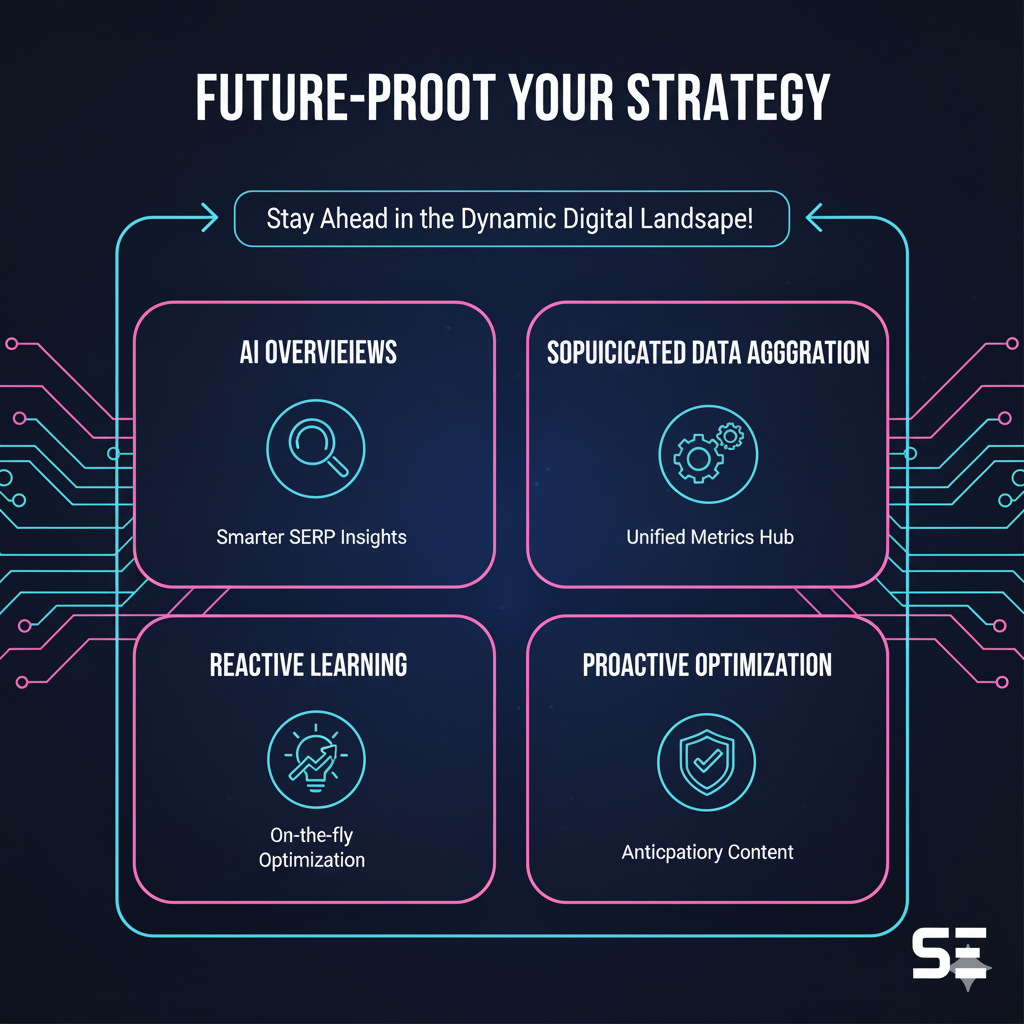
This strategy is the most reliable way to become a trusted source for AI Overviews, ensuring that your content is cited and your brand maintains visibility even in zero-click environments.
Success is measured not by the rank of a single keyword, but by the overall domain visibility and the consistent growth of organic traffic and conversions across the entire topic cluster [12].
The Human Element: The Irreplaceable Role of the SEO Strategist
While AI handles the heavy lifting of data processing, anomaly detection, and content scoring, the human element remains irreplaceable.
AI is a powerful tool for analysis, but it cannot formulate a creative, long-term strategy or make nuanced business decisions.
The role of the SEO strategist is evolving from a data manipulator to a strategic interpreter.
The human must interpret the AI’s insights, translate them into actionable business strategies, and oversee the creative execution of content.
For example, an AI might flag a competitor’s new content cluster as a threat, but it is the human strategist who must decide whether to counter with a more in-depth article, a video series, or a new product feature.
Continuous learning and adaptation are the most critical skills for the modern SEO professional in this rapidly changing field.
Actionable Steps to Implement AI-Smoothed Tracking Today
To begin the transition to a smoother, AI-driven tracking system, follow these actionable steps:
- Audit Your Current Tracking Tools and Identify Data Silos:
Start by mapping out every tool you use for SEO, analytics, and business reporting (e.g., GA4, Search Console, CRM, email marketing).
Identify where the data breaks down and where manual intervention is required.
The goal is to find the points of friction that AI can eliminate.
- Invest in a Rank Tracker That Monitors SERP Features and AIO:
Upgrade your rank tracking solution to one that calculates Share of Voice (SOV) and actively tracks the presence of AI Overviews and other rich SERP features.
This ensures your visibility metrics are representative of the modern search environment.
- Begin Using an AI-Powered Content Tool for Intent Analysis:
Adopt a content optimization platform that uses NLP to analyze user intent and topical authority.
Use it to audit your existing high-value pages and generate briefs for new content, shifting your focus from keyword density to semantic completeness.
- Focus Reporting on Business Outcomes Rather Than Vanity Metrics:
Adjust your reporting framework to prioritize metrics that directly impact the bottom line, such as conversion rates, revenue generated from organic traffic, and customer lifetime value (CLV).
Use AI’s aggregation capabilities to connect these business outcomes directly to your SEO efforts, making your reports more valuable to stakeholders.
Conclusion: Embracing the Intelligent Era of SEO
The era of simple keyword position tracking is over.
The future of SEO is not about fighting against AI, but about leveraging it to achieve a level of tracking accuracy, predictive capability, and strategic insight that was previously unattainable.
AI is the catalyst for a smoother, more intelligent approach to website analytics, transforming data overload into actionable intelligence.
By embracing AI-driven tools for intent analysis, data aggregation, and holistic visibility tracking, SEO professionals can future-proof their strategies and ensure their websites remain authoritative and visible in the dynamic, AI-first search landscape.
The time to adapt is now; the rewards are a more efficient workflow, more accurate metrics, and a clearer path to sustainable organic growth.
References
[3] The Death of SEO?
How AI is Shaping The Future of SEO. (2025). [URL: https://opace.agency/blog/death-of-seo-ai-future-of-seo]
[10] What Is AI Analytics?
A Guide to Smarter, Faster Insights. (2025). [URL: https://contentsquare.com/guides/ai-analytics/]
References
- [1] The Impact of AI on Rank Tracking and Keyword Position Monitoring. (2025). https://www.florintrips.com/ro/?the-impact-of-ai-on-rank-tracking-and-keyword-position-monitoring
- [2] The Future of SEO: How AI Is Already Changing Search. (2025). https://researchfdi.com/future-of-seo-ai/
- [3] The Death of SEO? How AI is Shaping The Future of SEO. (2025). https://opace.agency/blog/death-of-seo-ai-future-of-seo
- [4] What 2.3 Million Keywords Reveal About AI Overviews and SEO. (2025). https://www.seo.com/ai/ai-overviews-seo-impact-keyword-study/
- [5] Google Removes Key SEO Tracking Feature. (2025). https://www.innovationvisual.com/knowledge-hub/resources/google-removes-key-seo-tracking-feature-impact-on-your-rankings
- [6] The Impact of AI on Keyword Research: A Complete Guide. (2025). https://www.epicwebstudios.com/blog/the-impact-of-ai-on-keyword-research-a-complete-guide
- [7] Smarter SEO: Why AI is the Future of Keyword Research. (2025). https://masterful-marketing.com/ai-keyword-research/
- [8] It’s not either SEO or AI search – your strategy needs both. (2025). https://searchengineland.com/its-not-either-seo-or-ai-search-your-strategy-needs-both-464435
- [9] AI Data Analytics (Tools and Tips 2025). (2025). https://analytify.io/ai-data-analytics/
- [10] What Is AI Analytics? A Guide to Smarter, Faster Insights. (2025). https://contentsquare.com/guides/ai-analytics/
- [11] How AI Is Transforming The Future Of SEO. (2025). https://www.forbes.com/councils/forbesagencycouncil/2025/01/03/how-ai-is-transforming-the-future-of-seo/
- [12] The Future of SEO: Stay Visible as Search Evolves. (2025). https://www.salesforce.com/blog/future-of-seo/
